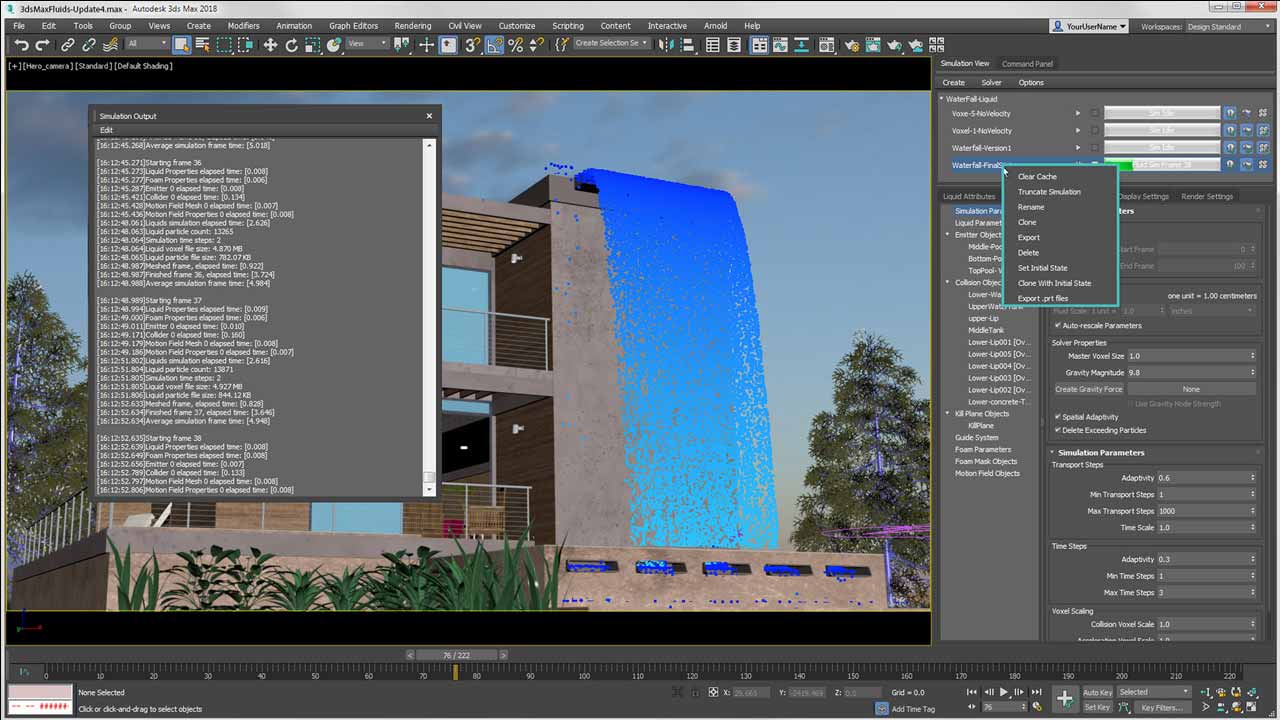Autodesk 3ds Max, formerly 3D Studio and 3D Studio Max, is a professional 3D computer graphics program for making 3D animations, models, games. Join over a half a million Autodesk Maya and 3ds Max artists. Find 3D tutorials, blogs, forums, and a 3D gallery of film, VFX, games, and design work.
Autodesk 3ds Max 2018
AMD Radeon™ ProRender is AMD’s powerful physically-based rendering engine that lets creative professionals use open industry standards to leverage GPU and CPU performance to produce stunningly photorealistic images in Autodesk® 3ds Max®. Fast, easy, and incredible, Radeon™ ProRender is available as a plug-in for 3ds Max® and can be used to render anything – product designs, architectural visualizations, visuals effects, and more. Radeon™ ProRender is fully integrated into 3ds Max® 2017, 2018, and 2019 for Microsoft Windows®, meaning you can use its existing lights, materials, and textures, and it renders your geometry accurately. Radeon™ ProRender also comes with a library of materials to get you started.
Current features of the AMD Radeon™ ProRender plug-in for Autodesk® 3ds Max® 2.3 Rendering.NEW. Improved subdivision of surfaces with Adaptive Subdivision speeds up workflows. Denoising support for both final and interactive rendering. Simplified sampling - all rendering samples are used for anti-aliasing. Native tone mapping and exposure controls. Depth map rendering capability, allowing the processing of depth of field manually. ActiveShade viewport integration means you can work with Radeon™ ProRender in real-time and see your changes as you make them.
Assign local resources to your GPU or CPU. Built on OpenCL™, it’s hardware agnostic, so it runs on virtually any hardware, including virtually any combination of GPUs and CPUs.
Near linear rendering performance scaling when adding additional GPUs. Render modes support global illumination, direct illumination (with/without shadow), wireframe, diffuse albedo, position, normal, texture coordinates, ambient occlusion. AOVs for post processing including support for opacity, world coordinates, UVs, material index, geometric normals, shading normal, reflections, and diffuse lighting. Control over frame completion and rendering - pause, set render pass limits and duration. Batch/background and region rendering support. Displacement and Renderstamp support.
Materials.NEW. Updated Uber Shader with more realistic defaults, enhanced subsurface scattering, diffuse backscattering, a simplified caustics option, and an improved clearcoat appearance.NEW. Ambient Occlusion node for enhanced procedural texture workflows.
Texture color space controls have been added - set the color space to either sRGB or linear. PBR shader material that closely matches Unreal® Engine’s PBR materials. Shadow Catcher material for compositing objects to IBL (Image-Based Lighting) environments or backplate images. Supports X-Rite’s Appearance Exchange Format (AxF™). Supports conversion of V-Ray Materials to Radeon™ ProRender materials. Physically correct materials and lighting allow you to make true design decisions with global illumination – including caustics. Includes a library of high-quality materials, including an uber shader for those who prefer this approach.
Import/export Radeon™ ProRender materials, including those from Autodesk® Maya®. Materials are simple to use and editable in the 3ds Max® Material Slate Editor. UV generation and basic transform info for maps, which include scaling, offset, and rotations. Change textures and apply tiling/scaling while rendering in ActiveShade. Supports Corona materials.


Lighting. Light Shader that creates realistic lighting, including area light shapes, color temperature, and texture maps. IES lights support lets you use the exact scattering and fall-offs of real-world lighting. Includes photometric lighting – supports IBL environments and a sun/sky system with time of day and location setting, control of sun/sky atmospherics, soft shadows, sky albedo and turbidity. Emissive materials and textured emission to allow any geometry emit light.
Real world unit support (lumen/lux/candela/kelvin). Supports HDRI environment mapping and lighting.
Supports 3ds Max® lights and tone mapping. Portal light and backplate image support. Ground plane shadows and reflections.
3ds Max Student Download
Camera. Manage/select different cameras which are rendered in interactive mode via ActiveShade. Depth of field (DOF) and motion blur support. Supports 3ds Max® camera presets.
Virtual Reality (VR) camera support. Workflow.NEW. Supports 3ds Max® 2017, 3ds Max® 2018, and 3ds Max® 2019.NEW. Large scene export optimization. glTF (GL Transmission Format) support for easy export of assets to other applications while preserving materials. Viewport update including undo/redo tracking and smart caching.
Integrates into existing 3ds Max® workflows. Batch/background rendering.
Autodesk 3ds Max Student
MaxScript support. Hardware. Runs on both GPUs and CPUs. OpenCL™ 1.2 required for GPUs.
AMD graphics cards are recommended. For non-AMD OpenCL™ 1.2 cards, Windows® 10 is required. Recommended Graphics Hardware:. AMD Radeon™ Pro WX series cards, Radeon™ Pro SSG graphics, Radeon™ Pro Duo (“Polaris”) graphics, Radeon™ Vega Frontier Edition cards, and AMD FirePro™ W9100, W8100, W7100 and S series cards. Compatible Graphics Hardware:. AMD Radeon™ Pro Duo (“Fiji”) graphics, Radeon™ RX series cards, R9 Fury series cards, R9 Nano graphics, R9 300 series cards, R9 290X graphics, R9 290 graphics, R9 285 graphics, R9 280X graphics, R9 280 graphics.